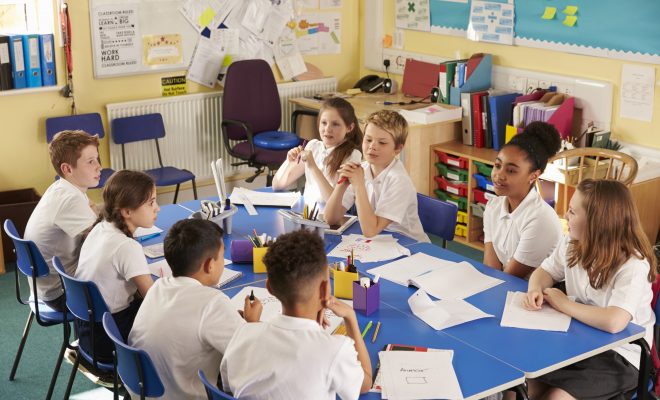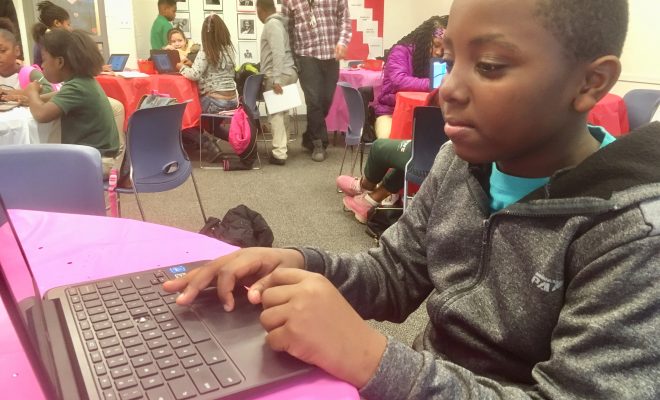Social Constructivism in Education

According to the theory of social constructivism, social worlds develop out of individuals’ interactions with their culture and society. Knowledge evolves through the process of social negotiation and evaluation of the viability of individual understanding. Basically, every conversation or encounter between two or more people presents an opportunity for new knowledge to be obtained, or present knowledge expanded. The exchange of ideas that goes along with human contact is at play here.
In order to apply social constructivism theories in the education arena, teachers and school leaders need to shift and reshape their perspectives. Both must move from being “people who teach” to being “facilitators of learning.” A good constructivist teacher is one who questions students’ answers, without regard to whether they are right or wrong, to make sure the student has a good grasp of the concept. Additionally, instructors should have their students explain the answers they give and not allow students to use words or equations without explanations. They should also encourage students to reflect on their answers.
Social constructivism teaches that all knowledge develops as a result of social interaction and language use, and is therefore a shared, rather than an individual, experience. Knowledge is additionally not a result of observing the world, it results from many social processes and interactions. We therefore find that constructivist learning attaches as much meaning to the process of learning as it does to the acquisition of new knowledge. In other words, the journey is just as important as the destination.
The process of learning requires that the learner actively participate in creative activities and self-organization. Teachers should allow their students to come up with their own questions, make their own theories, and test them for viability. Moreover, those who practice constructivist theory find that imbalance facilitates learning, in the sense that contradictions between the learner’s current understanding and experiences create an imbalance, which leads the learner to inquire into his or her own beliefs and then try out new ideas. Instructors should therefore encourage errors resulting from the learners’ ideas, instead of minimizing or avoiding them.
Students should also be challenged by their instructors to perform open-ended investigations, working to solve problems with realistic and meaningful contexts. This activity enables the learner to explore, and come up with either supporting or conflicting possibilities. Contradictions need to be investigated, clarified, and discussed.
Through the process of reflecting on the collected data,, learning is given a push. A good example of allowing reflection is through journal writing, which usually facilitates reflective thoughts.
Dialogue within a community stimulates new ideas. All school stakeholders should view the classroom as a community for discussion and exchange of ideas. Students in the classroom are responsible for the defense, proof, justification, and communication of their ideas to the community. These ideas can only be accepted as truth if they can make sense to the community. If they do, they become shared knowledge. In summary, learning occurs not through hearing or seeing, but primarily through interpretation. Interpretation is shaped by what’s already known, and is further develop through discussion.





